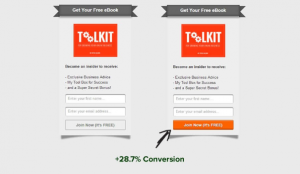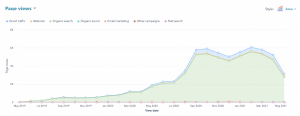You’re leading a team meeting when you notice Bryce, usually one of the most attentive team members, repeatedly glancing at their phone, furrowing their eyebrows, and clearly preoccupied.
Later, they reveal that they’re stressed by an issue at home. You know firsthand that they are not alone. Life issues, from caregiving to household hassles, are pervasive and represent a massive, and often overlooked, tax on employee morale and productivity.
In 2023, worker stress reached record levels for the second year in a row. Over three-quarters (77%) of employees are burnt out juggling a growing workload with increasingly hectic life obligations. With this unprecedented level of worker dissatisfaction, unless we take action, we should brace for a return to record turnover as the economy rebounds.
Realizing that the workplace might become a source of solutions rather than additions to life’s problems will keep employees focused, plugged in, and happy, no matter their situation. To do this, we must understand what distracts employees in the first place.
The short answer is that most of us are distracted by the burdens that we carry with us into the workplace from our lives. One in six employees is a caregiver, one in three employees is managing a chronic illness, and nearly two in three live paycheck to paycheck.
Add the heavy burden placed on workers raising young children and the time commitment of caring for pets and maintaining a home, it’s no wonder productivity is plummeting and employee stress is at an all-time high.
As the CEO of an employee productivity-concierge company used by Epic Staffing Group, Beatbox Beverages, Oshi Health, and others, I’ve gotten a firsthand look at what issues keep employees up at night and distracted at work. From the mundane to the life-altering, here are the top four reasons your employees are distracted, and what you can do to help.
The pesky little hassles of life
We’ve analyzed requests from over 10,000 employees asking for our help, and frequently what people are distracted by is rather routine. One of our most frequent requests is helping employees find and schedule simple services and goods. This could be finding a therapist who accepts their insurance, a handyman to repair a broken window, or refilling an out-of-stock prescription.
While these issues aren’t earth-shattering, they are annoying and time-consuming and take two to three hours to complete.
Take for example Jade, an events manager for a well-known nonprofit. Having her first child meant balancing her demanding work schedule with a time-consuming prenatal care plan, and preparing for a child. She and her partner would need to move from their one-bedroom apartment to a bigger place, understand their leave paperwork, update their health insurance, find a pediatrician, and arrange for childcare. Each of these tasks can be stressful and frustrating, and together they can be downright paralyzing. It is no wonder that 43% of highly skilled women leave the workforce after having a child.
Wading through bureaucracy saps motivation
Nearly 20% of the distractions employees seek help for are for assistance in navigating bureaucracy, from appealing a denied medical claim to figuring out how to complete vehicle emissions or dispute a traffic ticket.
Take for example Dylan, a director of business development at a leading tech company. When his 2022 trip to Switzerland was canceled after he contracted COVID-19, Dylan was relieved he had purchased trip insurance. But to get his refund, Dylan was confronted with a mountain of paperwork, red tape, conflicting directions, and a customer service center that operated only during normal business hours, when Dylan was at work.
It felt as if the system was designed to frustrate claimants so much that they just give up. For the majority of workers who have to manage these types of frustrations on their own, it just compounds an already stressful situation and another distraction that erodes productivity and happiness.
Caregiving is all-consuming
From accompanying dad to a doctor’s appointment to making the parent-teacher-conference, caregivers have a lot to balance. With more couples continuing to work through parenthood, an aging population, and a declinine health span, the number of employees caring for loved ones has reached historic levels.
Melissa, a management consultant at a global consulting firm, is a caregiver to her mother who suffers from multiple sclerosis (MS). In addition to her busy work and travel schedule, Melissa must arrange doctor visits, prescription refills, medical bills, and care providers to help her mother with meal preparation, hygiene, transportation, and other daily care.
When her mother contracted COVID-19 and required in-home care, Melissa was saddled with the responsibility of finding and having a specific motorized model of a hospital bed delivered to her home. This required time-consuming research and multiple phone calls to providers, as well as navigating a lengthy and complicated Medicare claims process.
Some distractions are a grabbag
Then there’s the category that includes everything else. There are seasonal questions we can expect every year like finding accountants during tax season, researching vacation rentals and camps as summer break approaches, gift guides during the holidays, and even vasectomies around March Madness.
Macro trends also play a factor. As interest rates rose, we saw fewer people searching for realtors and mortgage refinances, and more employees searching for debt consolidation and asking for help building budgets. As supply chains are disrupted by conflict and trade wars, we see an increase in requests for procuring affected goods – have you tried to refill a prescription lately?
It’s not our fault but it is our problem
Workers today face no shortage of challenges to navigate inside and outside of the work environment. With stress and burnout at all-time highs, and employee productivity on the decline, it’s clear that life stressors are permeating the firewall of work. Rather than becoming a source of additional stress, workplaces have the potential to become a source of solutions. Providing support, having empathy for employees’ needs, allowing for occasional flexibility, and encouraging open dialogue and transparency about what is happening in employees’ lives, will pay off in the long run. It’s not just good for your people, it’s also good for business.
(4)







